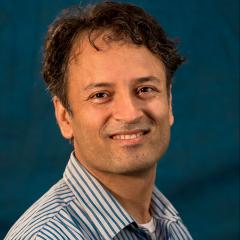Satish Bastola, Ph.D., EIT

Education
- Ph.D. in Engineering, University of Yamanashi, Japan (2008)
- MSc, Water Resources Engineering, Tribhuvan University, Nepal (2001)
- BE, Civil Engineering, Tribhuvan University, Nepal (1998)
About
Satish Bastola received his Ph.D. degree in Engineering from the University of Yamanashi (Japan, 2008). Prior to joining the University of New Orleans in 2019, he had worked as a research engineer at Georgia Institute of Technology for 6 year and post-doctoral researcher at several universities, e.g., Florida State University (USA, 2 Year), University of Ireland (Ireland, 2 Year) and University of Montpellier (France; 2 Year). Dr. Bastola has extensive experience in a wide range of research interests in water resources, hydrological modeling, GIS, Remote sensing, Downscaling, and dynamic interaction of ecohydrological, geomorphological and biogeochemical processes in a range of water system. He has published nearly 50 research articles in journals and was involved in several NSF funded National scale projects.
Dr. Bastola has research interest in a) Study of terrestrial water cycle of a medium to large river basins, b) Interaction of hydrological, geomorphological and biogeochemical processes, c) Terrestrial biosphere modeling, d) Assessing the impact climate and global change on water resources, hazards (Coastal erosion, Flooding), and hydrologic regimes, e) Influence of vegetation on soil erosion, shallow landslide, and gully erosion, f) Statistical downscaling for hydrological application, g) Combining crop model and satellite data for crop yield analysis.
Dr. Bastola has taught several courses on water resources and is currently teaching Natural Hazards mitigation modeling, coastal engineering and Coastal and Hydraulic structure. Dr. Bastola is a Member of American and European Geophysical Union.
Research Interests
- Terrestrial water cycle of a medium to large river basins.
- Interaction of hydrological, geomorphological and biogeochemical processes.
- Terrestrial biosphere modeling.
- Effect of climate and global change on water resources and hydrologic regimes.
- Influence of vegetation on soil erosion, shallow landslide, and gully erosion.
- Statistical downscaling for hydrological application.
- Combining crop model and satellite data for crop yield analysis.

